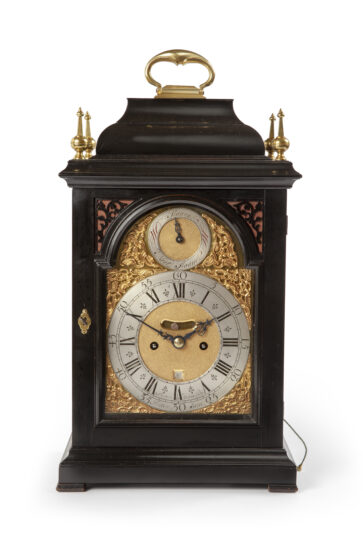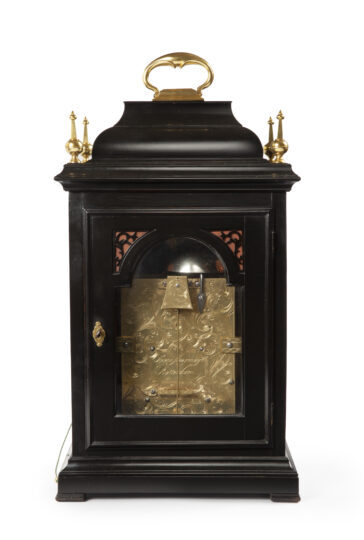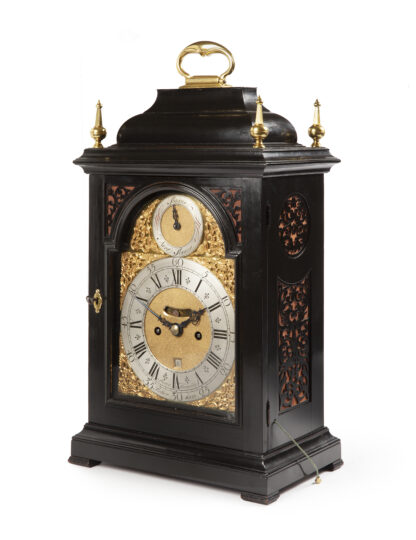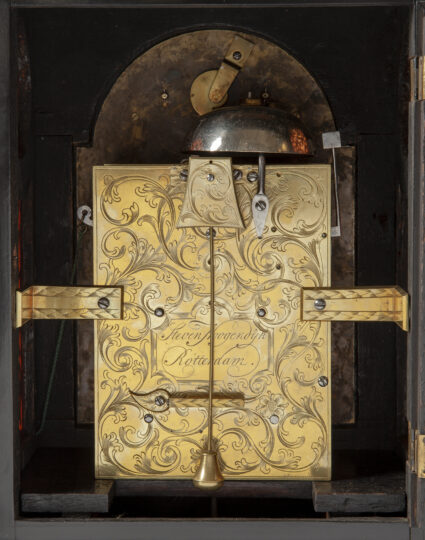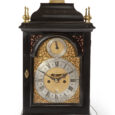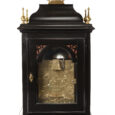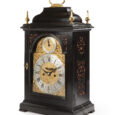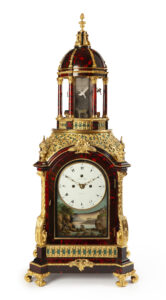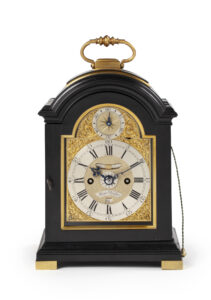TABLE CLOCK Steven Hoogendijk Rotterdam Ca. 1730
M&R20
TABLE CLOCK
Signed: Steven Hoogendijk Rotterdam
Circa 1730
Netherlands
Movement
The spring-driven double fusee brass movement consists of going and striking trains. The going train has verge escapement with short pendulum. The striking indicates the hour- and halfhours fully on a bell and has trip repeat so that the last hour struck can be repeated at all times by pulling a cord. The backplate is profusely engraved depicting scroll and leaf motifs around a cartouche with the signature of the maker: Steven Hoogendijk Rotterdam.
Dial
The arched dial has a silvered chapter ring with Roman hour, fleur-de-lys half-hour, Arabic five-minute and minute divisions. There is a date aperture above the VI. The time is indicated by a fine pair of pierced blued steel hands. In the arch is a silvered strike /silent ring with a blued-steel hand with which the striking can be turned on or off. The centre is matted. The maker has signed the chapter ring below the VI: Steven Hoogendijk Rotterdam. The corners of the dial are embellished by pierced spandrels.
Case
The ebonised pearwood veneered oak case has a so-called inverted bell top. The sides have pierced sound apertures, as has the front door in the upper corners. The case is surmounted by a carrying handle and four shaped brass finials on the corners. The whole rests on four ebonised pearwood feet.
Duration 1 week
Height 48 cm.
Width 27 cm.
Depth 16.5 cm.
*Price on request
Literature
– E. Morpurgo, Nederlandse klokken- en uurwerkmakers vanaf 1300, Amsterdam, 1970, p. 60
– Brian Loomes, Watchmakers & Clockmakers of the World, London, 2006, p. 388
The maker
Steven Hoogendijk was born in Rotterdam on 1 April 1698, the son of Adriaan Hoogendijk and Elisabeth Tracy, whose father was Steven Tracy, an English clock and instrument maker who was active in the Netherlands. Steven Hoogendijk was apprenticed to Pieter Uyterweer the Elder and lived in the Kleine Draaisteeg. He was a member of the Remonstrant Church. In 1769 he founded the Bataafsch Genootschap der proefondervindelijke Wijsbegeerte (‘the Batavian Society for Experimental Philosophy’). He died in 1788. Various clocks and timepieces by his hand are known.

